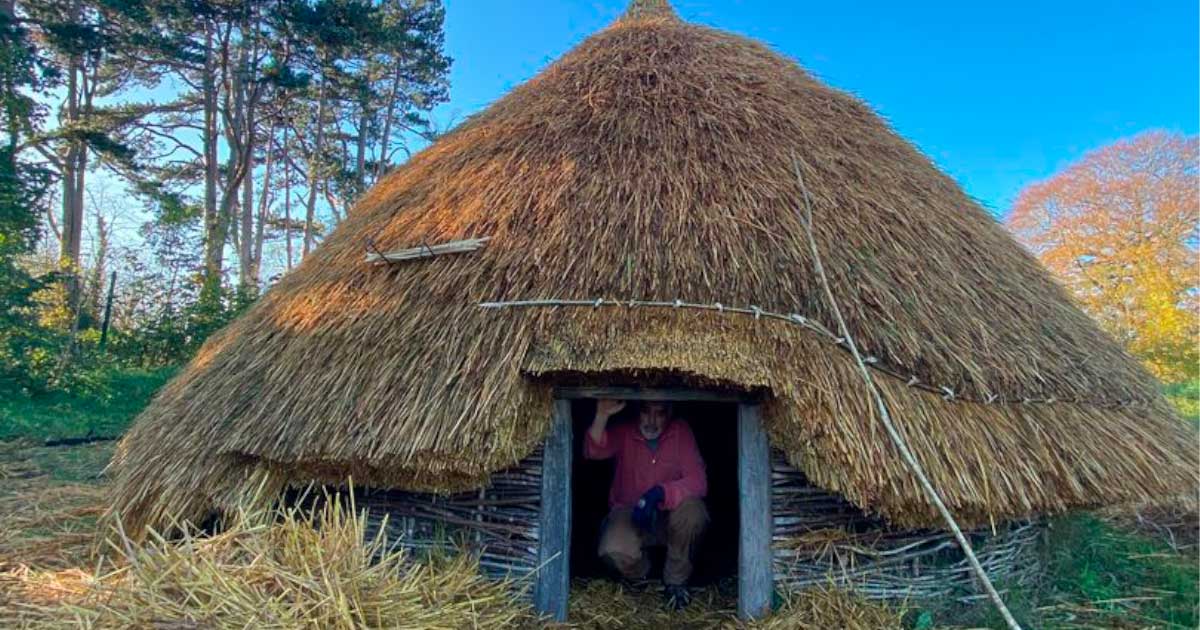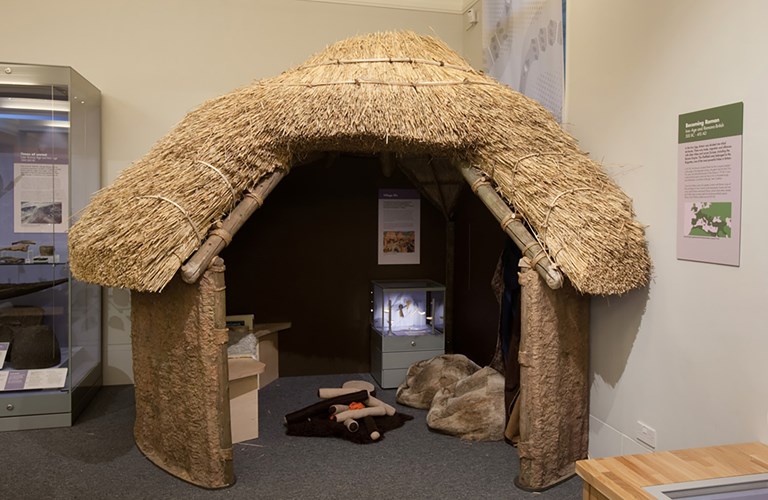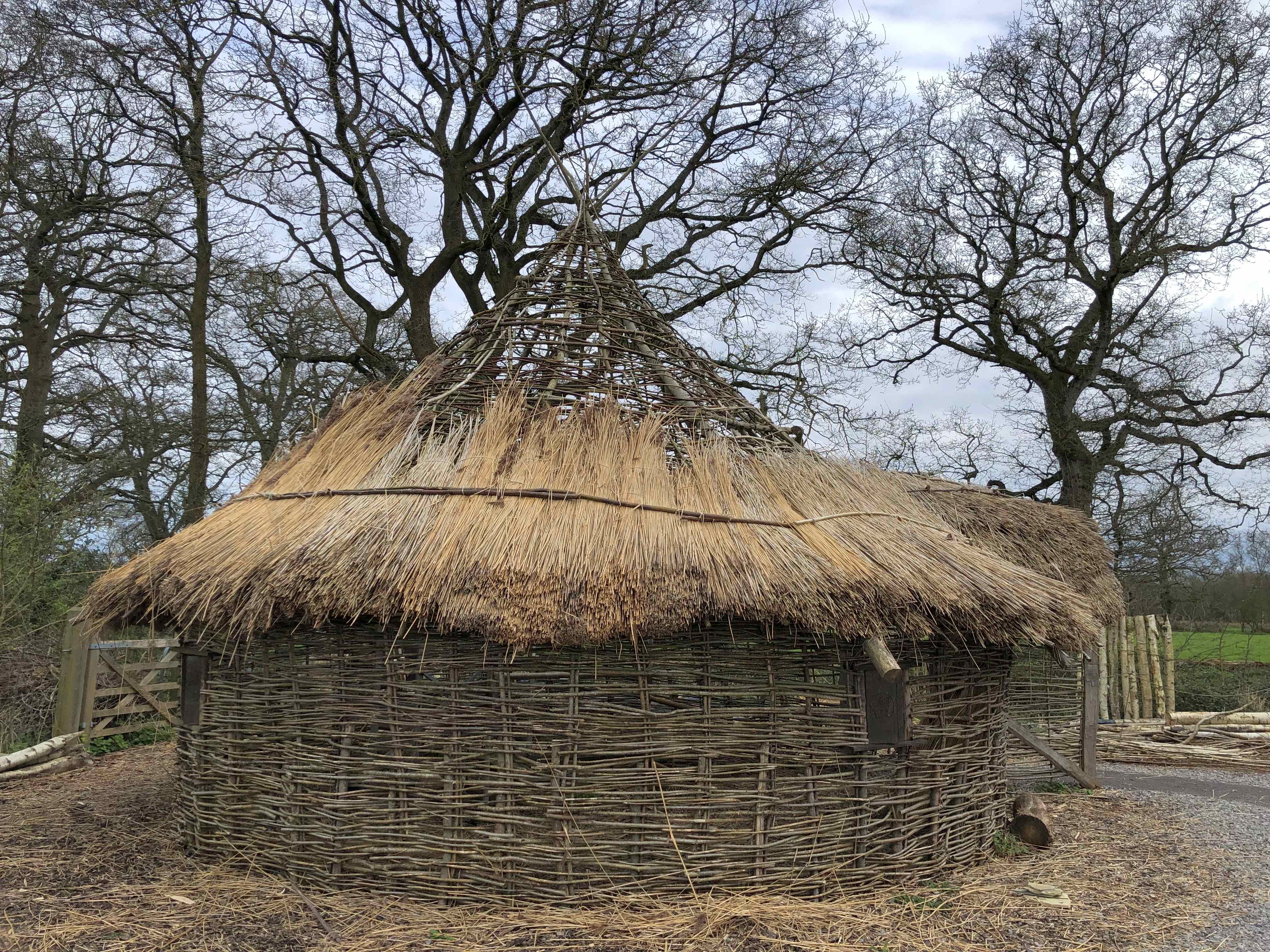Antwort When did people live in roundhouses? Weitere Antworten – How did Iron Age people live

Homes. Inside the hill forts, families lived in round houses. These were simple one-roomed homes with a pointed thatched roof and walls made from wattle and daub (a mixture of mud and twigs). In the centre of a round house was a fire where meals were cooked in a cauldron.The shape was more than a matter of space, though. The Celts built roundhouses so that they could put a fire in the very centre of the building. This would allow the heat to spread evenly, and would help everyone inside stay warm.Hillforts were frequently occupied by conquering armies, but on other occasions the forts were destroyed, the local people forcibly evicted, and the forts left derelict. For example, Solsbury Hill was sacked and deserted during the Belgic invasions of southern Britain in the 1st century BC.
What did people eat in the Iron Age : Iron Age people ate:
- Meat from hunted animals such as wild boar.
- Beef, mutton, and pork from reared livestock (cattle, sheep, and pigs)
- Eggs and meat from chickens raised inside the fort.
- Root vegetables like carrots, parsnips, and onions.
- Wild herbs like sorrel, garlic, and fennel that people would forage when in season.
How long did humans live in the Iron Age
30-45 years old
In the Bronze and Iron Age, the adults already got a bit older: 30-45 years old. But as well here, ¼ of all newborn babies died and about half of all newborns did not survive to become an adult.
Was the Iron Age a dark age : 800 BCE, overlapping with the Iron Age, c. 1200-550 BCE) is the modern-day term for the period in Greek history following the Bronze Age Collapse when the Mycenaean Civilization fell and the Linear B writing system was lost, giving the era the designation "dark" because no contemporary written accounts of it exist.
They fell out of use in South-West Britain in the 8th Century. Wales may have had them potentially for longer. Rectangular houses become popular among Irish elite 900 – 1000 CE.
During the Bronze and Iron Ages in Britain, roundhouses were the most common form of home. These roundhouses are reconstructions based on the archaeology of the original houses, which were excavated by the Gwynedd Archaeological Trust between 1985 and 1987. The excavations revealed three substantial roundhouses.
When did people live in hill forts
During the Iron Age (c. 800 BC – AD 43), many people in Britain lived in settlements called hillforts. A hillfort could be home to hundreds of people. These settlements were on higher ground because it made it easier to defend their tribe against attacks from other tribes.To protect themselves, they built forts on the tops of hills. Some hill forts were almost like small towns. They were full of wooden houses with thatched roofs made of straw. These hill forts gave the tribes an excellent view, allowing them to see enemies coming from miles away.
- Plants – These included tubers, seeds, nuts, wild-grown barley that was pounded into flour, legumes, and flowers.
- Animals – Because they were more readily available, lean small game animals were the main animals eaten.
- Seafood – The diet included shellfish and other smaller fish.
Most fruits and vegetables were grown on the farmstead, and families processed meats such as poultry, beef, and pork. People had seasonal diets. In the spring and summer months, they ate many more fruits and vegetables than they did in the fall and winter.
How long did humans live 5000 years ago : The life expectancy of the Early Bronze Age and its contemporaries is around 35-40 years. People died at a very young age. Infant and child mortality was very high. The limited food resources and infectious diseases were also factors, too.”
What will life be like in 3000 : In the year 3000, humans will exist in a world transformed by advanced technologies, AI, and robotics. They will possess enhanced physical and mental capabilities, coexisting and collaborating with intelligent machines.
What are the 5 ages of man
- Golden Age: 1710 to 1674 BC.
- Silver Age: 1674 to 1628 BC.
- Bronze Age: 1628 to 1472 BC.
- Heroic Age: 1460 to 1103 BC.
- Iron Age: 1103 BC, still going on.
The Early Iron Age in the Caucasus area is divided conventionally into two periods, Early Iron I, dated to about 1100 BC, and the Early Iron II phase from the tenth to ninth centuries BC. Many of the material culture traditions of the Late Bronze Age continued into the Early Iron Age.Rectangular buildings replace the roundhouse eventually because of construction materials and, possibly, because of the Roman influence; the arrival of concrete, the arch and the rectilinear layout.
What era are roundhouses : Roundhouses were the standard form of housing built in Britain and Ireland from the Bronze Age throughout the Iron Age, and in some areas well into the Sub Roman period. The people built walls made of either stone or of wooden posts joined by wattle-and-daub panels, and topped with a conical thatched roof.







